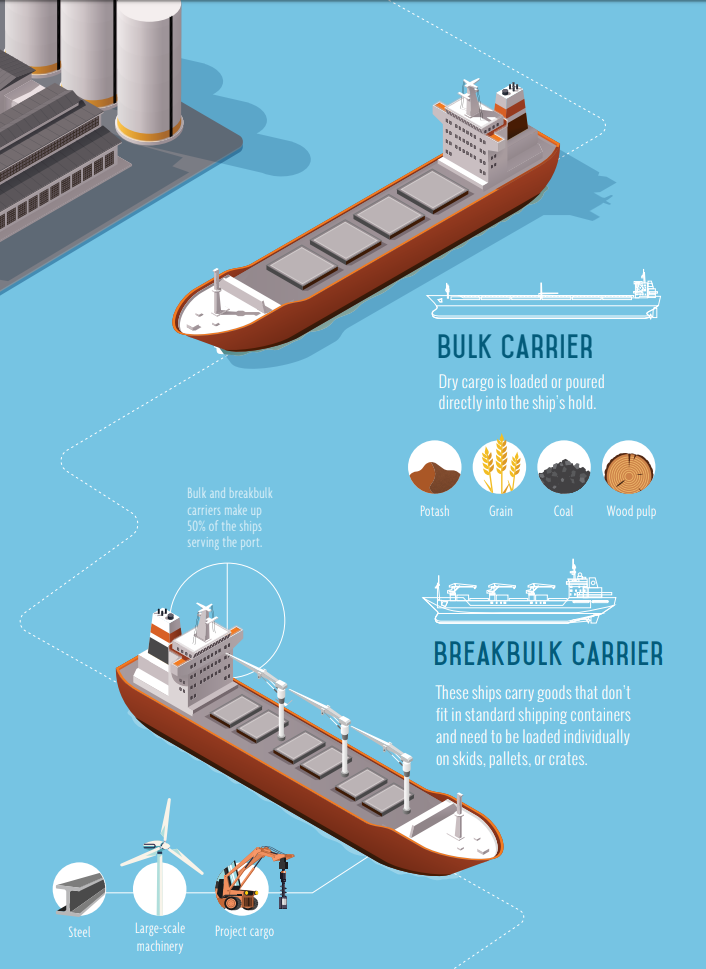The Metro Vancouver region is home to the Port of Vancouver, the largest port in Canada. Port of Vancouver-related activities help support more than 115,000 jobs in Canada and the trade of over $200 billion in goods annually. About 8 ships call on the Port of Vancouver every day.
On the contrary, about 92 ships visit the Port of Rotterdam, Europe’s largest port.
Yet, port of Vancouver presents which types of vessels visit the port. In click on the infographic below for more information:
As presented in the infographic above, there are many different types of vessels in local waterways.
- Bulk carriers: Dry cargo is loaded or poured directly into the ship’s hold, as potash, grain, coal and wood pupl;
- Breakbulk carriers: These ships carry goods that don’t fit in standard shipping containers and need to be loaded individually on skids, pallets, or crates.
- Container Ships: These ships carry cargo in containers that hold everything from imported consumer goods to exported resources. Container ships make up 25.5% of the ships serving the port.
- Tugboats: Tankers and other large vessels receive tugboat escort and support, which help guide them in and out of busy waterways.
- Tankers: These ships carry liquid cargo such as petroleum products, vegetable oil or chemicals. They have extra safety features such as double hulls and require special assistance from tugboats. Tugboats may also be seen moving barges and other cargo.
- Ro-ros: Roll-on/roll-off vessels – also known as RoRo – are used to transport vehicles and oversize cargo such as heavy-duty equipment. RoRo carriers make up 8% of the ships serving the port.
- Cruise ships: These unmistakable “floating cities” are frequent visitors carrying cruise passengers usually bound for Alaska. Cruise ships make up 8% of the ships serving the port.
- Supply barge: While ships are docked or at anchor, barges may be moved alongside a ship to supply them with fuel and other provisions.

































































